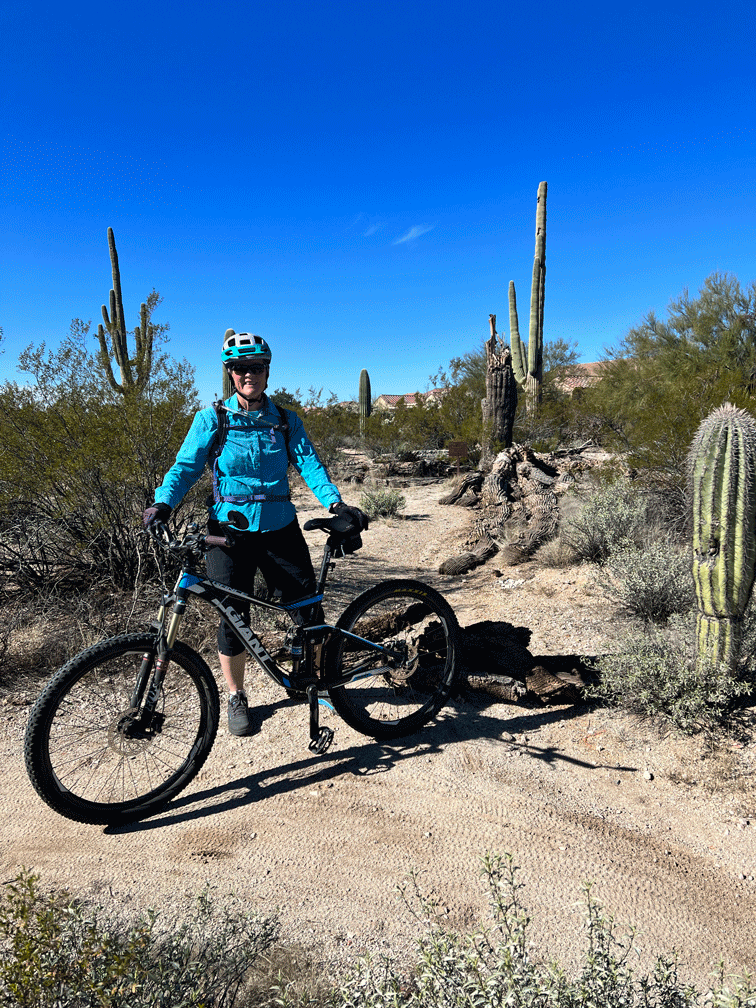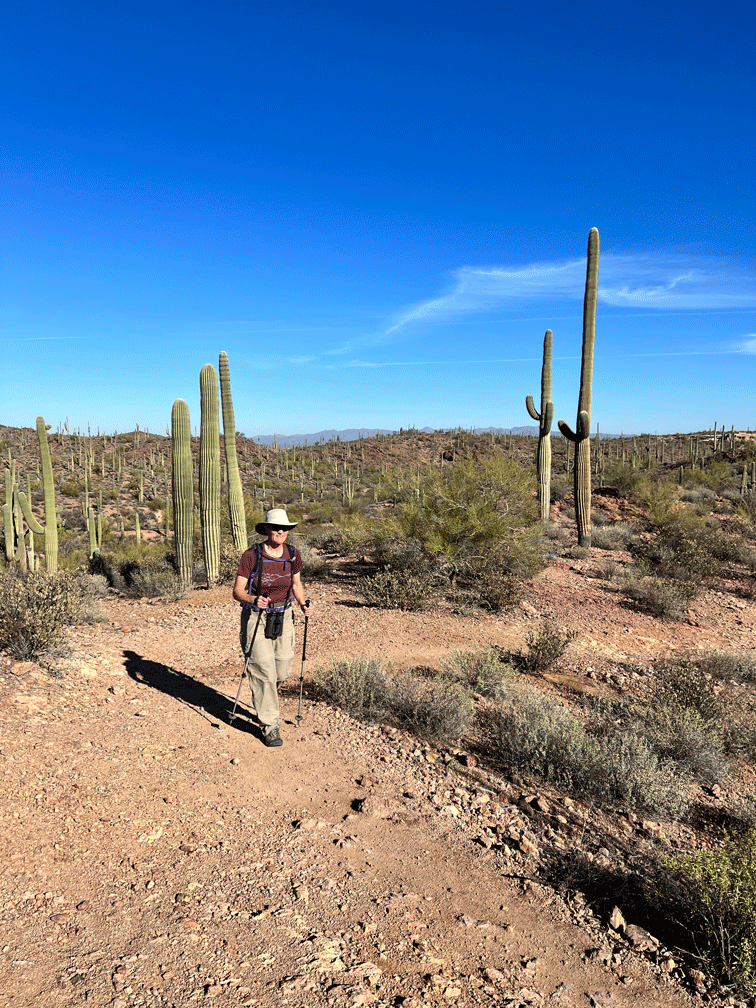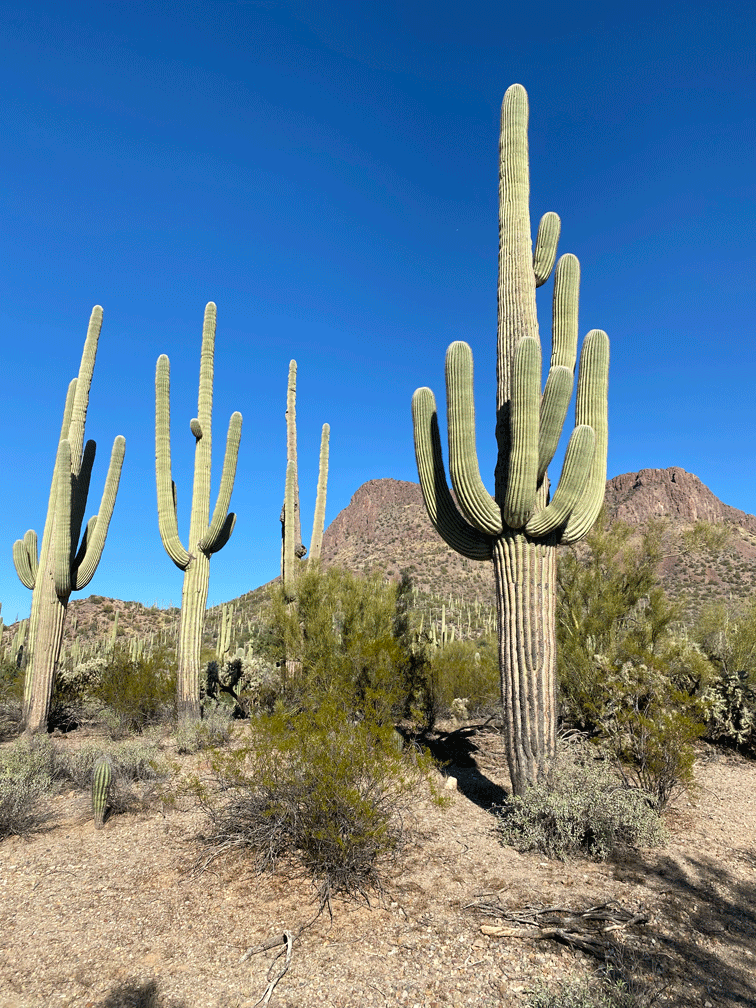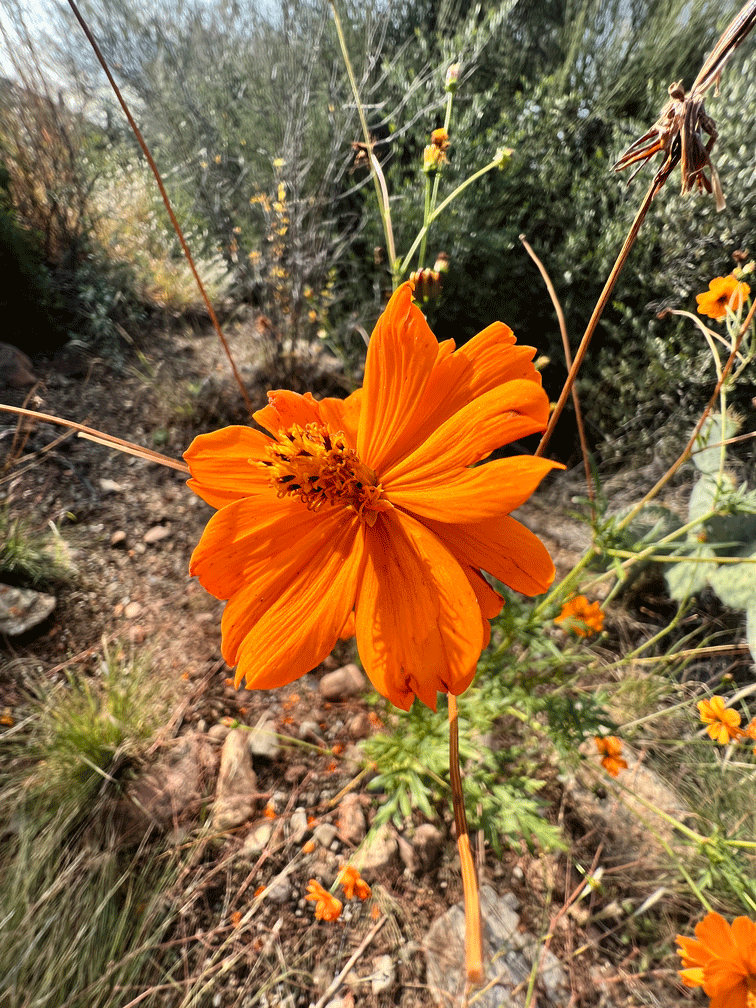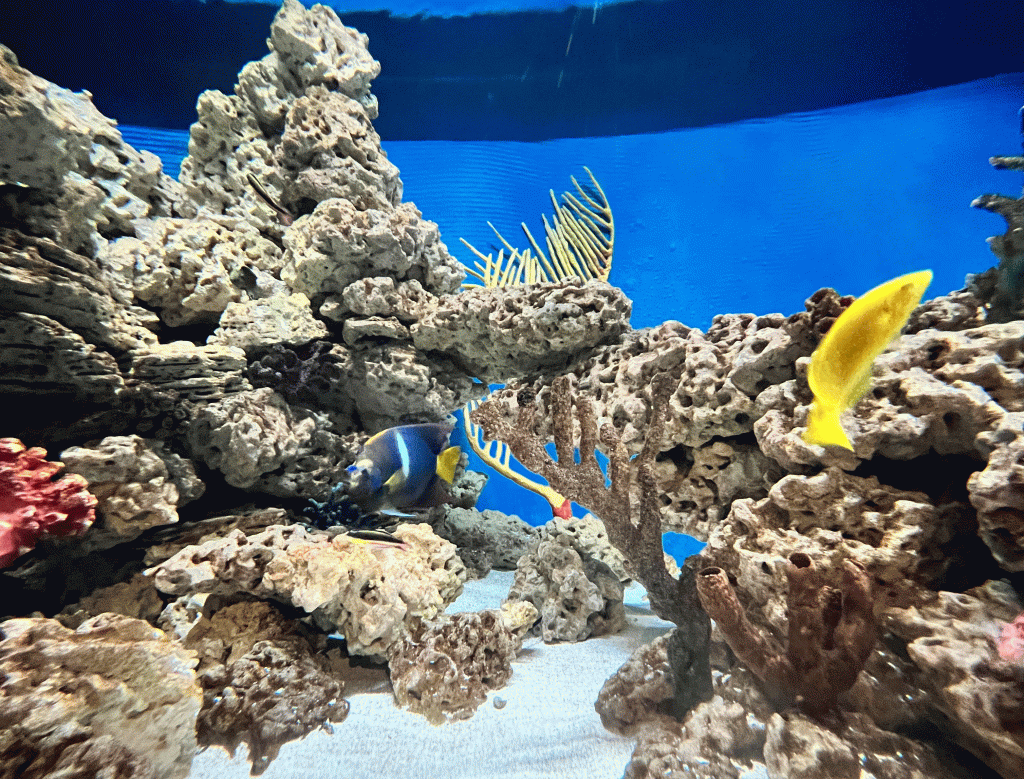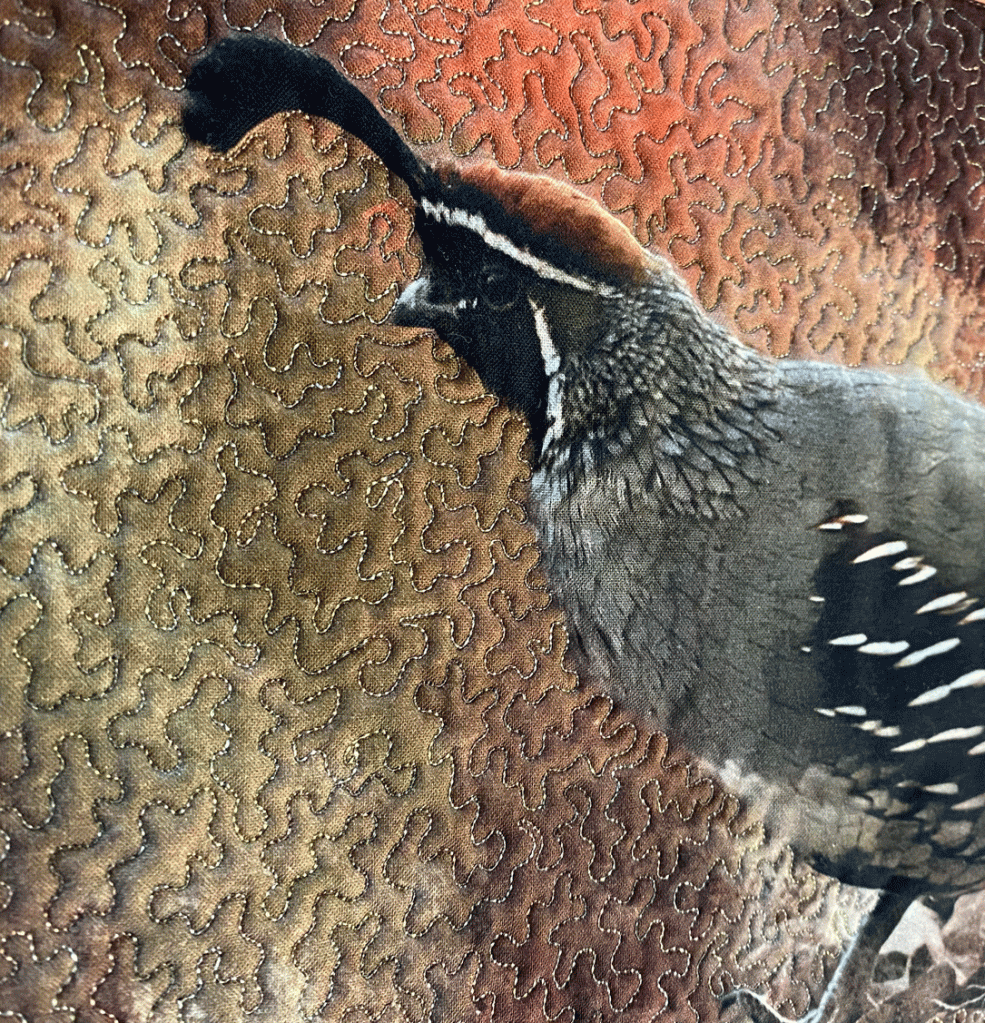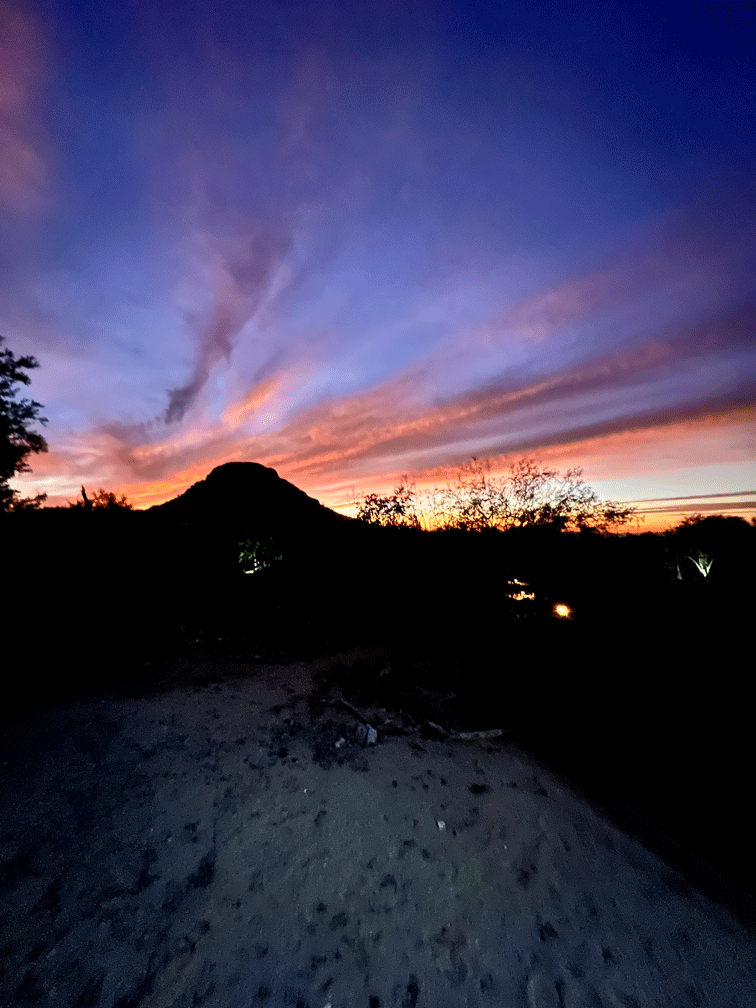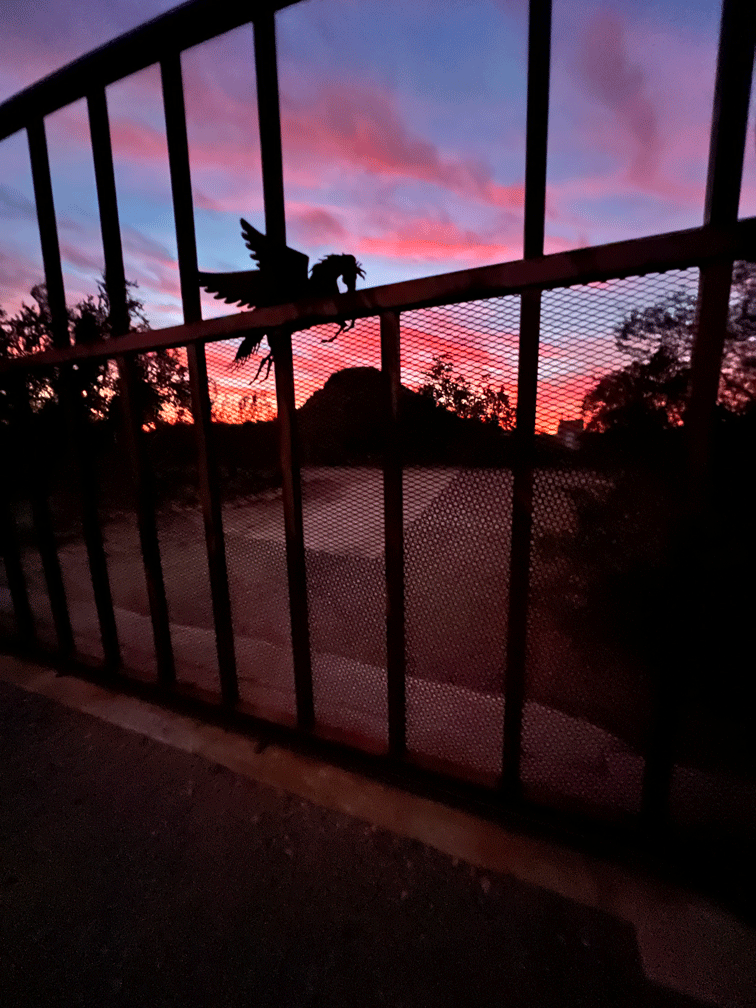This blog post is all about the places we went birding and the birds that we saw. We made an effort to go to new birding spots. One of them was Montosa Canyon, which is on the Mt. Hopkins Road on the west side of the Santa Rita Mountains. We didn’t see any rarities but it was more of a reconnaissance trip so we’ll know the area better for our next visits. And maybe on our next visit, we’ll remember to take a photo of the area. Anyway, there were several Hutton’s Vireos and Doug captured this one in good light. A Hutton’s Vireo looks a lot like a Ruby-crowned Kinglet, except chunkier and slower moving.

Canoa Historic Ranch is close to Montosa Canyon, so we made a stop there. This Snow Goose has taken up residence. It’s a juvenile which is confirmed by its dingy gray plumage.
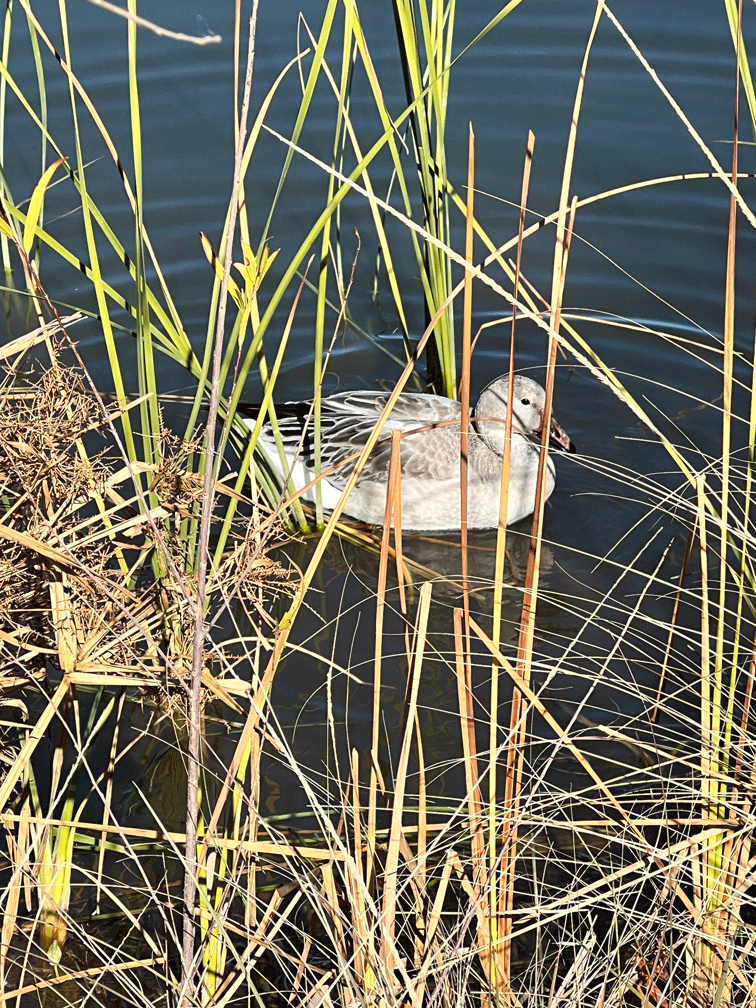
Another day we familiarized ourselves with a small section of Box Canyon. We watched this almost dry waterfall for over an hour. Some of the birds were below us, some were high on the ridge and some mostly stayed in the middle. It was interesting to see the wildlife “wake up” as the sun hit the rocks. We also saw a family of coatis scrambling among the rocks.
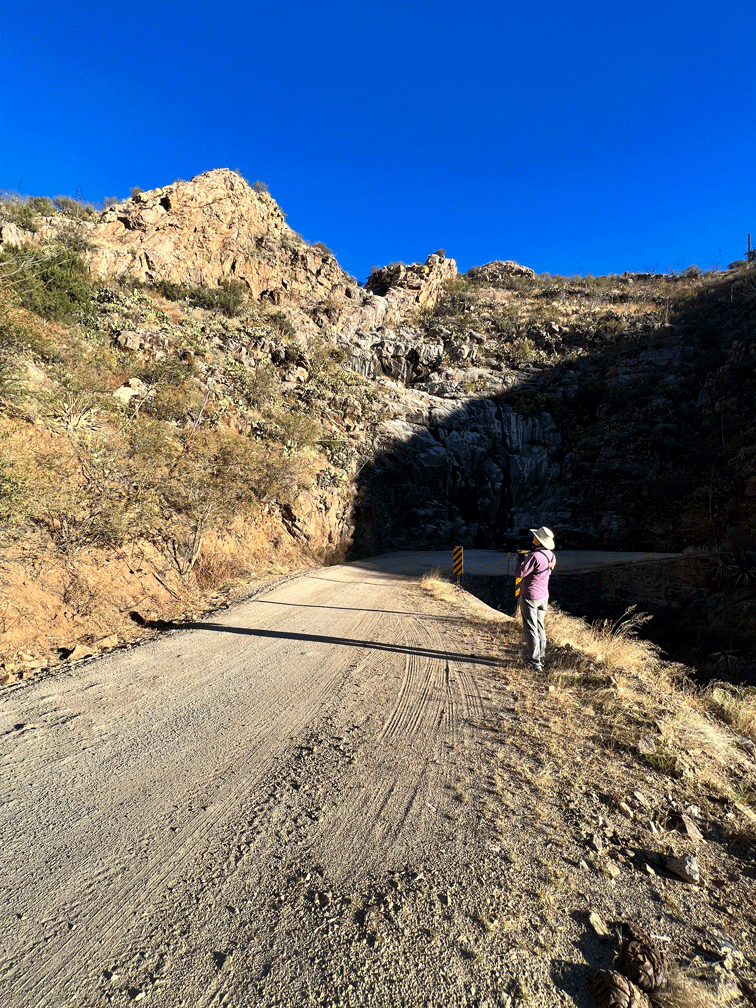
After talking to some birding friends, we learned about another part of Box Canyon to explore. This spot was above an old dam and therefore flatter. We visited in a cold snap, and there were still remnants of snow from a recent storm. There were no “special” birds on this trip, but we’ll be ready when they are sure to arrive in the spring.
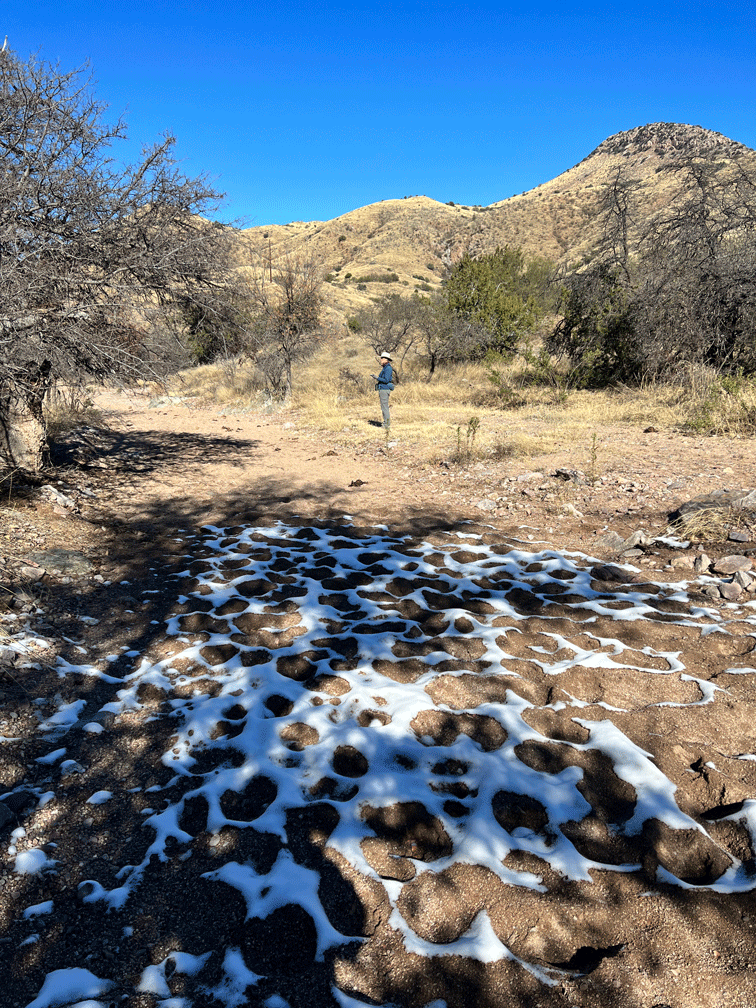
And we went back one more time, after finding out about a creek with flowing water. There were several American Robins in this habitat.
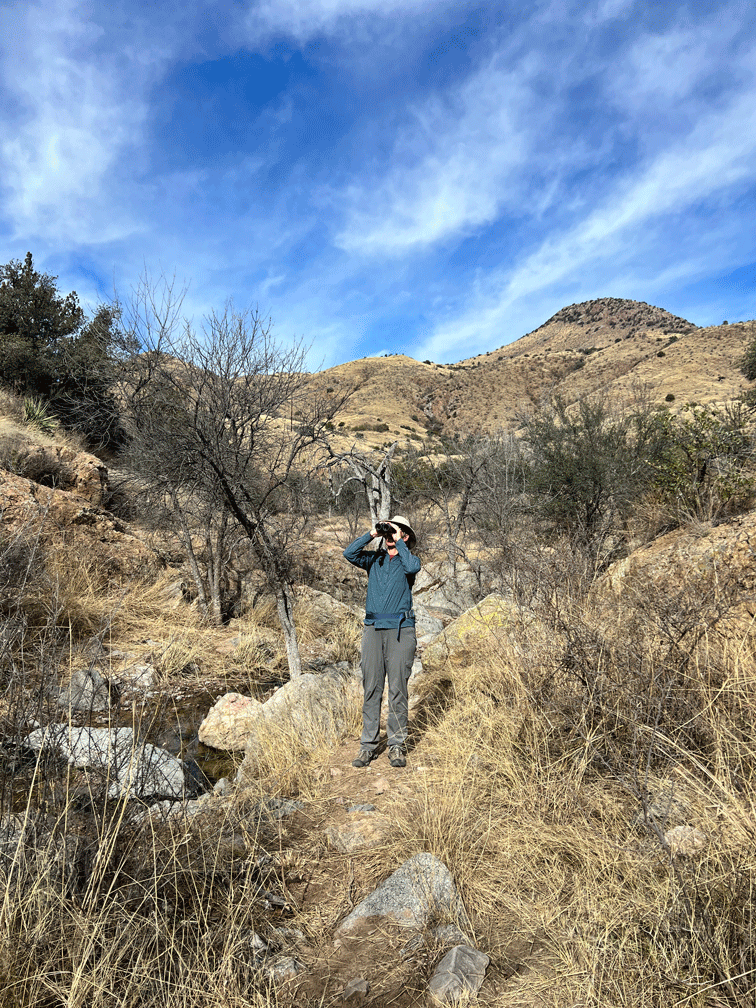
This mesquite tree provided a micro-environment for a rare bird for Arizona. A Black-throated Blue Warbler got side-tracked on his way to the Caribbean and decided that the mesquite in the yard of a NE Tucson condominium, beside a popular hiking trail was his favourite spot.
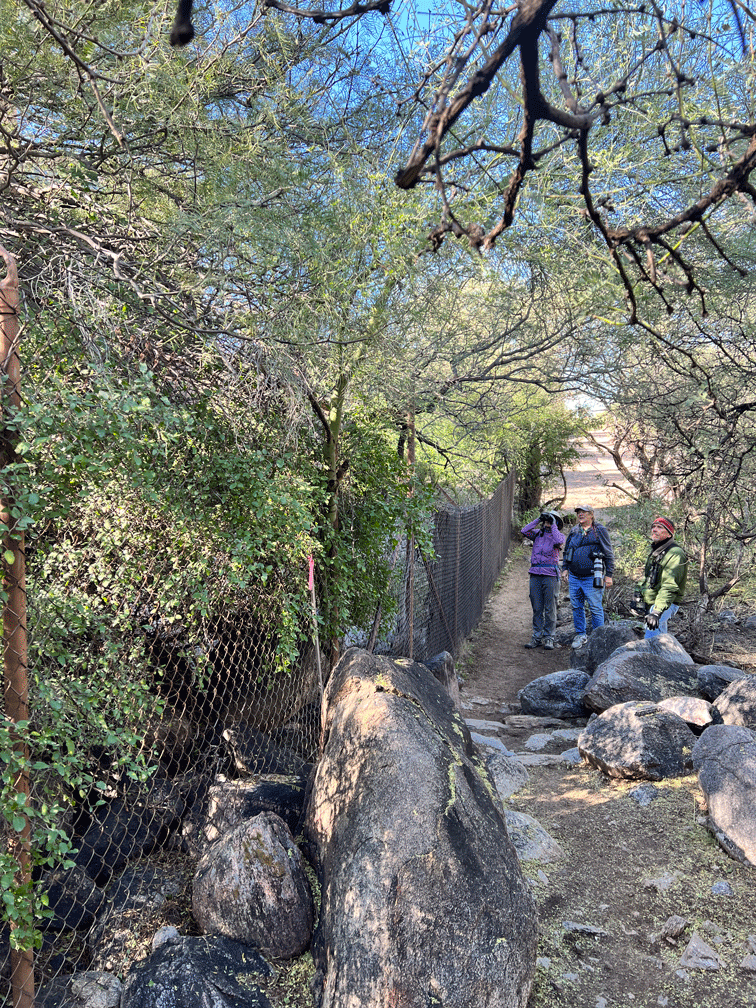
The fence and the tangle of branches made viewing difficult, but Doug was able to get a “doc shot,” which means it wasn’t the greatest photo, but it was enough for identification purposes and documentation. We spent a few hours watching this pretty bird as he chased other birds away from his chosen tree and ate insects that were attracted to the sapsucker holes on the tree trunks.
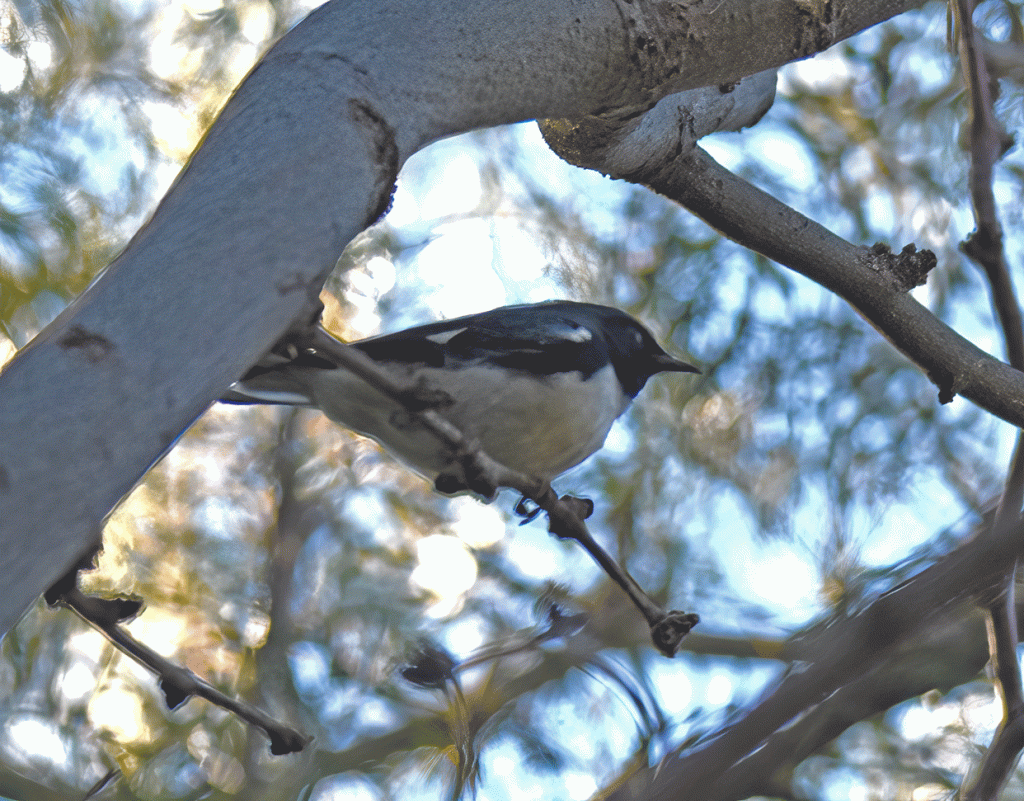
We saw this Greater Pewee at Madera Canyon, one of our regular birding spots. Its bi-colour bill is distinctive.
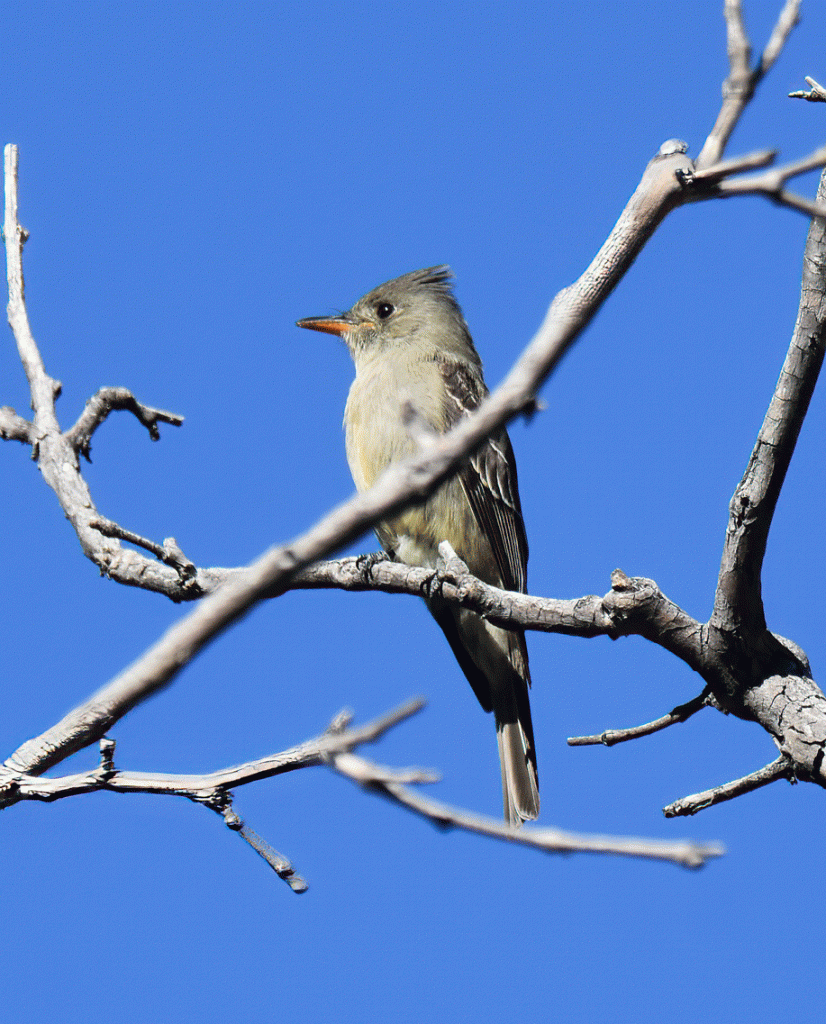
El Rio Open Space Preserve is also a regular stop. The Town of Marana has made improvements on the former gravel pit. Wendy is looking through the scope at the waterfowl: lots of Mallards, Northern Pintails, Ring-necked Ducks and Green-winged Teals, and only one Redhead. Finding the one Redhead in among around a hundred other ducks is a similar exercise to the children’s book, “Where’s Waldo?”
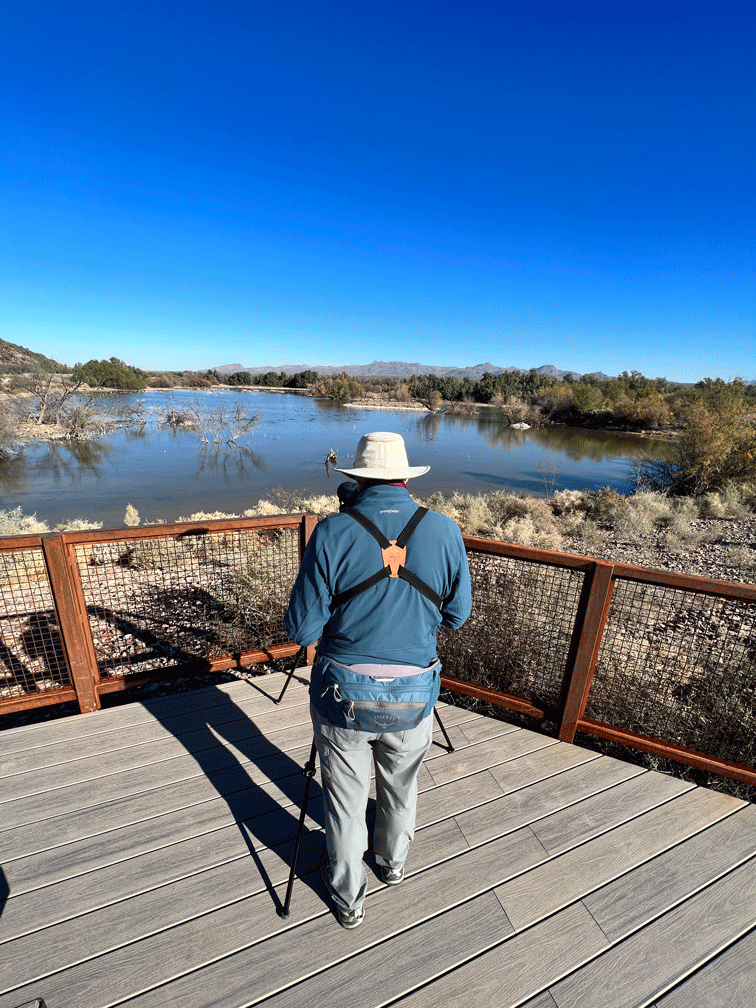
Along the northern side of the pond, there is a trail that heads into the rough grasses and brush. There were several sparrows at the start of the trail, so we ventured farther.
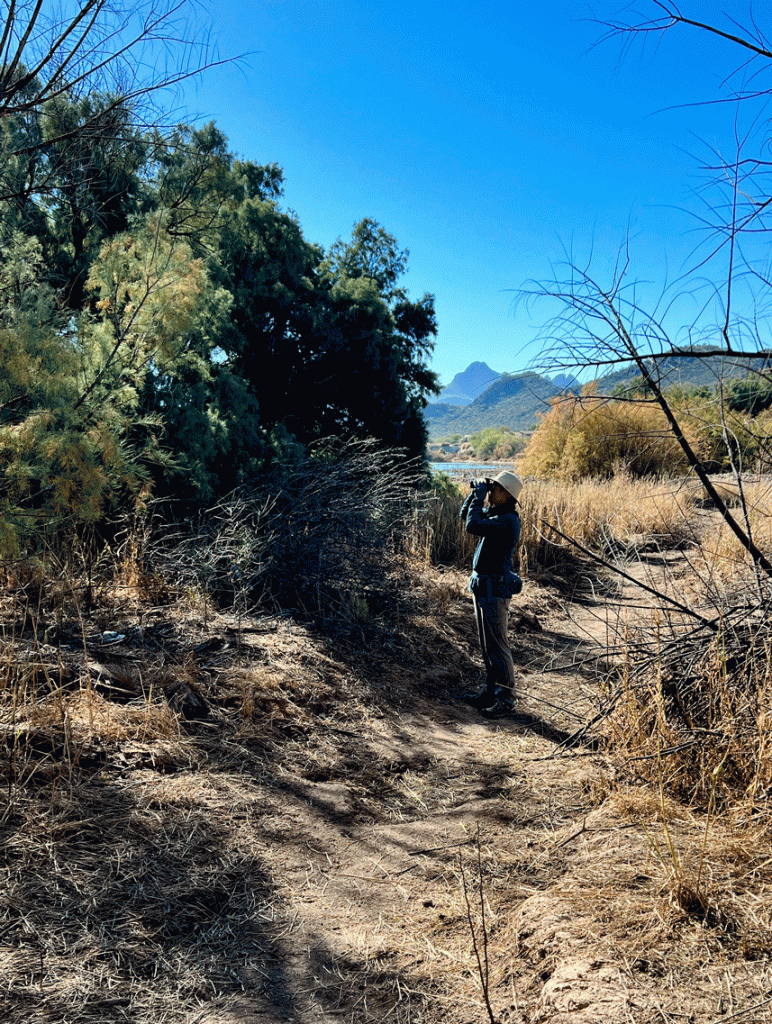
We were lucky enough to see a female Lazuli Bunting. Lazuli Buntings spend their summers in the north and pass through the Tucson area on their way to Mexico where they winter. Perhaps this one is one of the few that will winter in this area.

Another day, we set out to see a Rusty Blackbird. Several people had seen a pair of these rare birds at a waterhole in Las Cienegas National Conservation Area. It was a popular enough bird for the location to be named, “stake-out for Rusty Blackbird” on eBird. We waited for about an hour for the blackbirds to show up. There was a very energetic Vermilion Flycatcher and an actively feeding Wilson’s Snipe that kept us entertained while we waited.

Here’s the male Rusty Blackbird. They are found in much of Canada during the summer, (although we have never seen one there), and spend winters in Eastern United States.

Here is the pair; the female is actually “rustier” than the male bird.

On our way home, we drove through Patagonia and stopped at the Patagonia Lake State Park. Here’s a view from the start of the birding trail that overlooks some feeders. Somewhere among the large groups of sleeping birds, there was a Greater Scaup (another rarity for the area) but it was impossible to tell. We’re not very concerned if we can’t see this bird in Arizona, because we know we’ll see at least one in the summer in Canada.

Now to a different kind of “stake-out.” This time we were trying to see an Elegant Trogon in Madera Canyon. It had been seen regularly for the last few days from this spot under the sycamores. In the picture below, at least one person is looking towards the pycantha tree that we all expected the bird would visit.

There were a few other birds around like this Bridled Titmouse. We hung around for a few hours. Some people gave up and left and others talked about if they left the trogon would show up.

A friend took our picture since not much was happening.
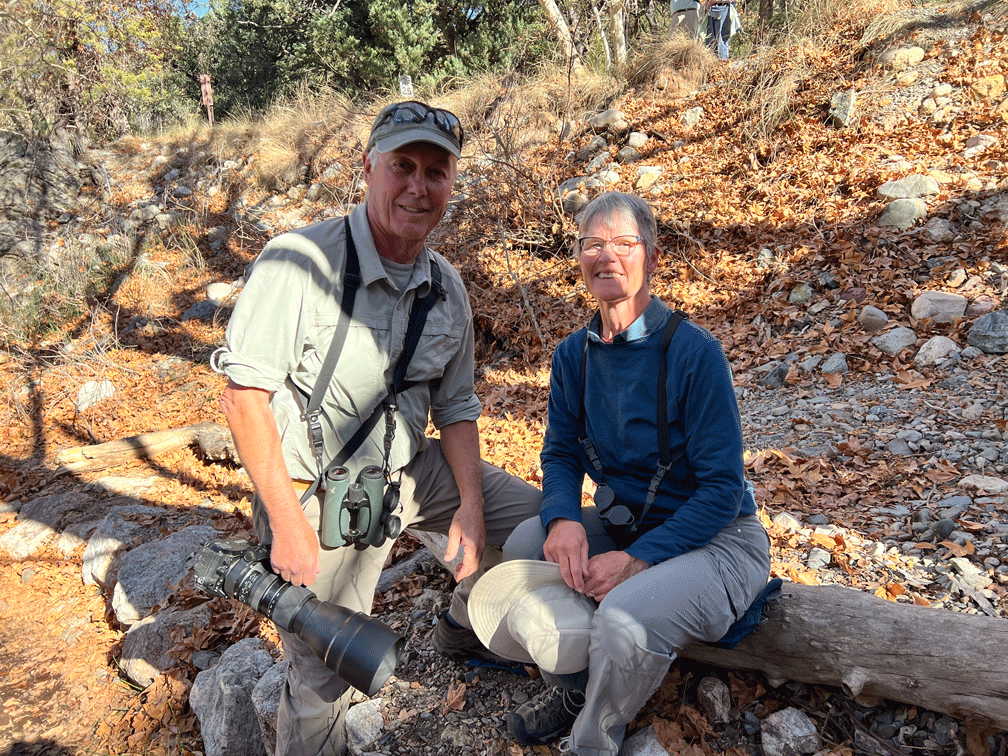
And all at once, things happened. One of the women who had left went to picnic site downstream from where we were. She found the trogon! She texted her friend who was still up with the big group and the message was relayed to us all. We hustled back to the truck and drove five minutes down to the next parking area. Someone relocated it and we all got a quick view of the trogon before it flew below.

Most people went back to the parking area, but Wendy scrambled down the bank on an animal path hoping to get a better view. Doug followed and we were rewarded with amazing views of a male Elegant Trogon. His red chest is very striking,
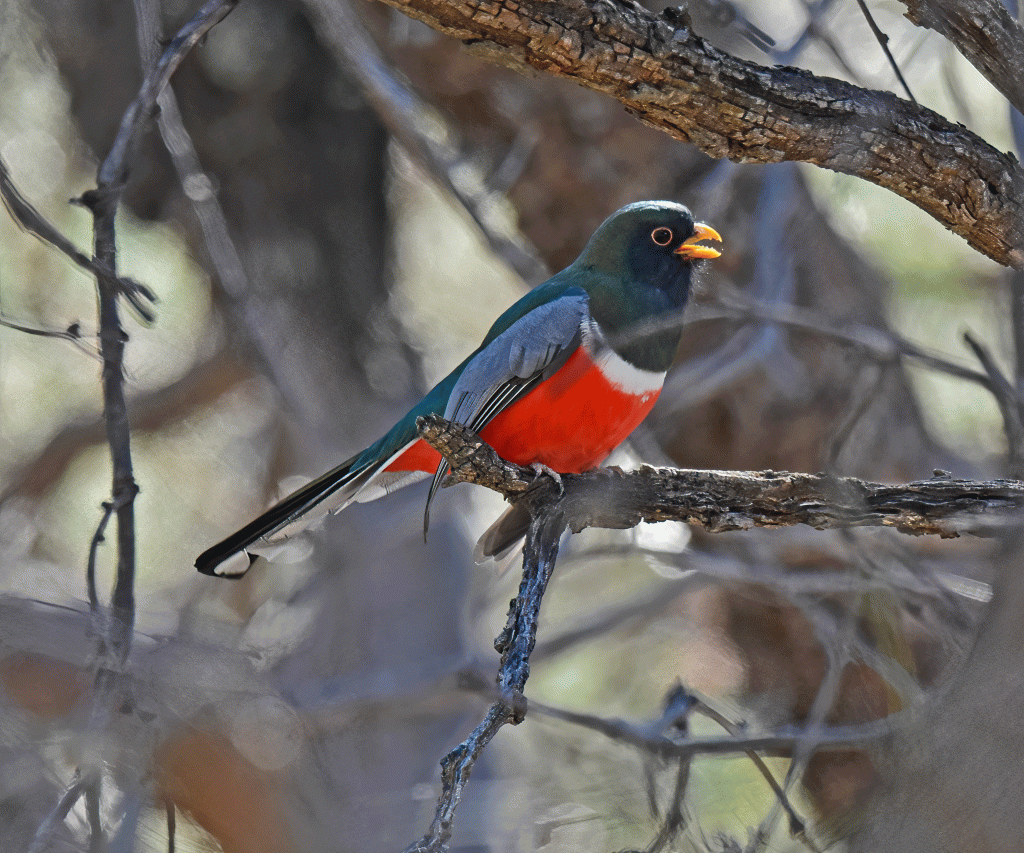
but his shimmery green back is exquisite.

The Elegant Trogon perched long enough for Doug to take a photo with his iPhone. That gives an indication about how close we were.
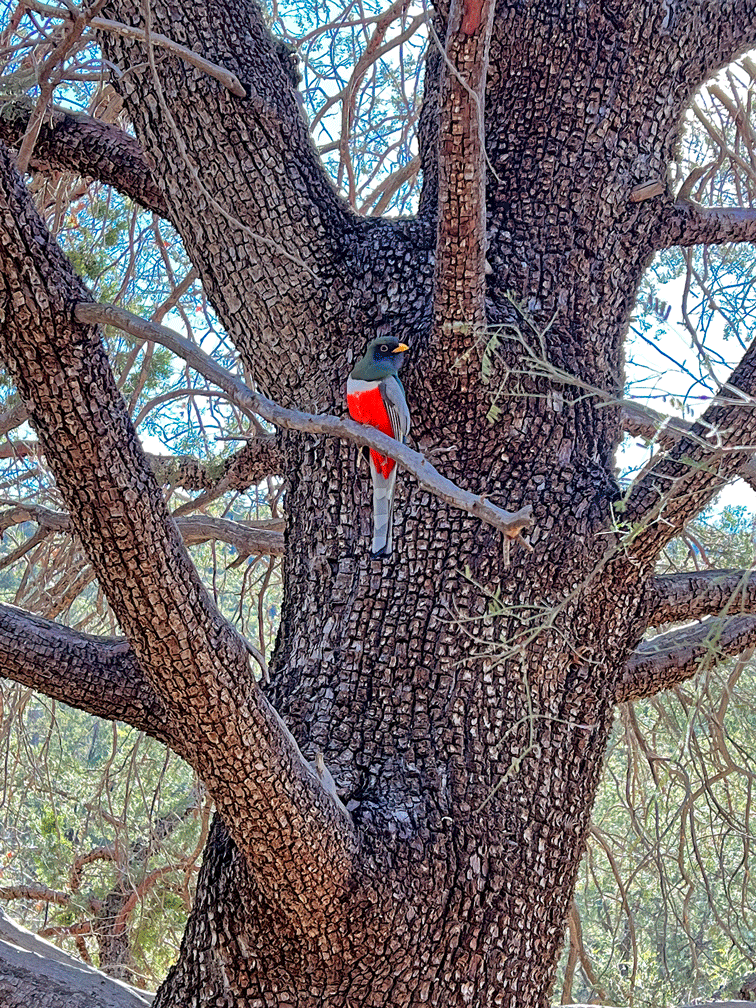
We had several minutes with the trogon to ourselves, but we were happy to share the experience with others. Here’s a photo of a couple of the areas top birders getting some good shots. We also had the chance to point out the bird to casual hikers. Eventually it flew farther down the slope, out of view, and we felt very privileged to have had such an awe-inspiring experience.

We made another trip to Las Cienegas Natural Conservation Area. There are six types of ecosystems in the 42 000 acre block of now-protected public land. In the photo below, Doug is looking over semi-desert grassland. From this spot, we saw a Chihuahuan Meadowlark and four species of Raptors: Red-tailed hawks, Northern Harriers, American Kestrels and White-tailed Kites.
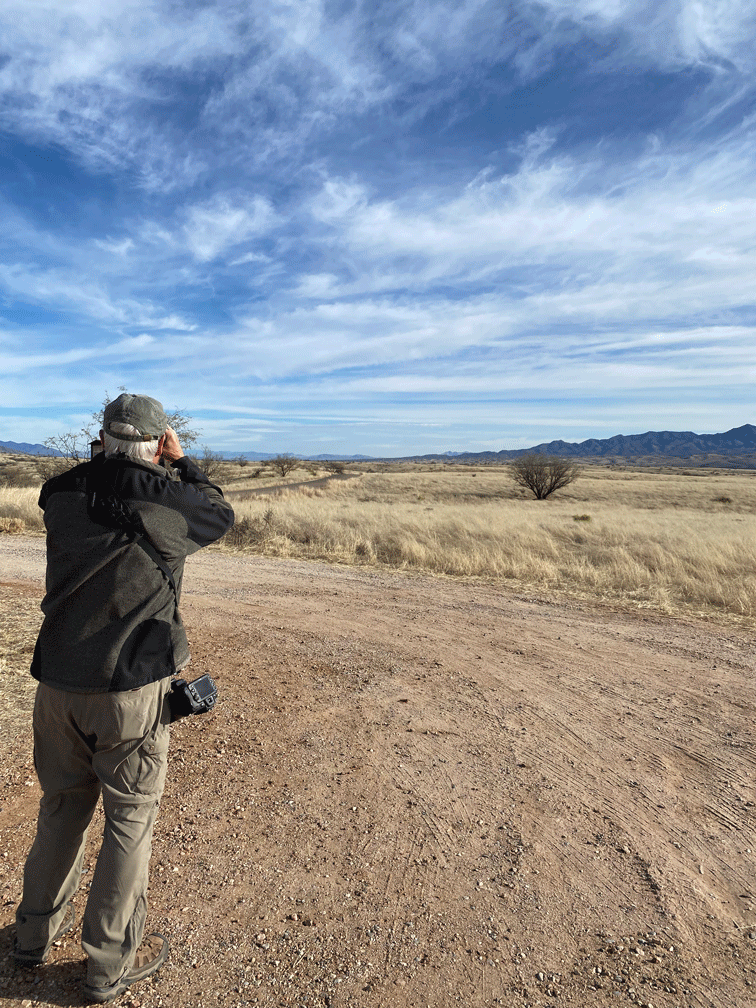
Here’s Doug’s photo of one of the White-tailed Kites.
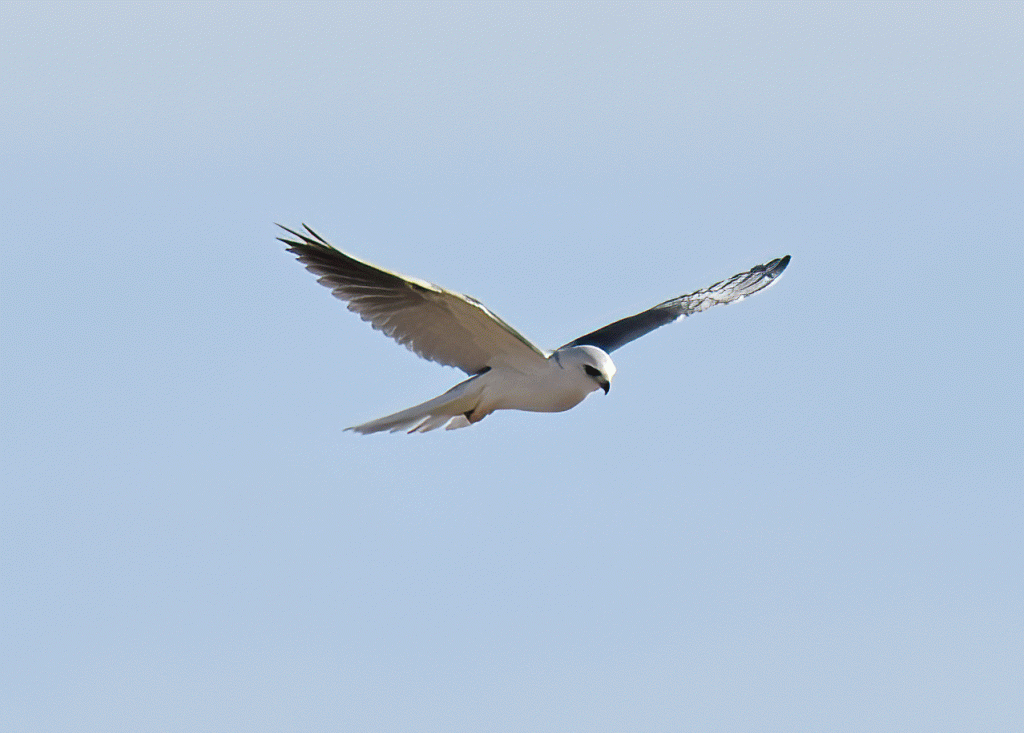
Another day, we went into the scrub desert just west of Picture Rocks to find a Bendire’s Thrasher. We found the bird, and had good views through the scope. The photo was good enough to prove we had seen the thrasher, but we didn’t include it here.
This photo of a Black Vulture was the best one of the outing. It was a cold morning and we think the vulture was waiting for the desert to heat up so it could ride the thermals.
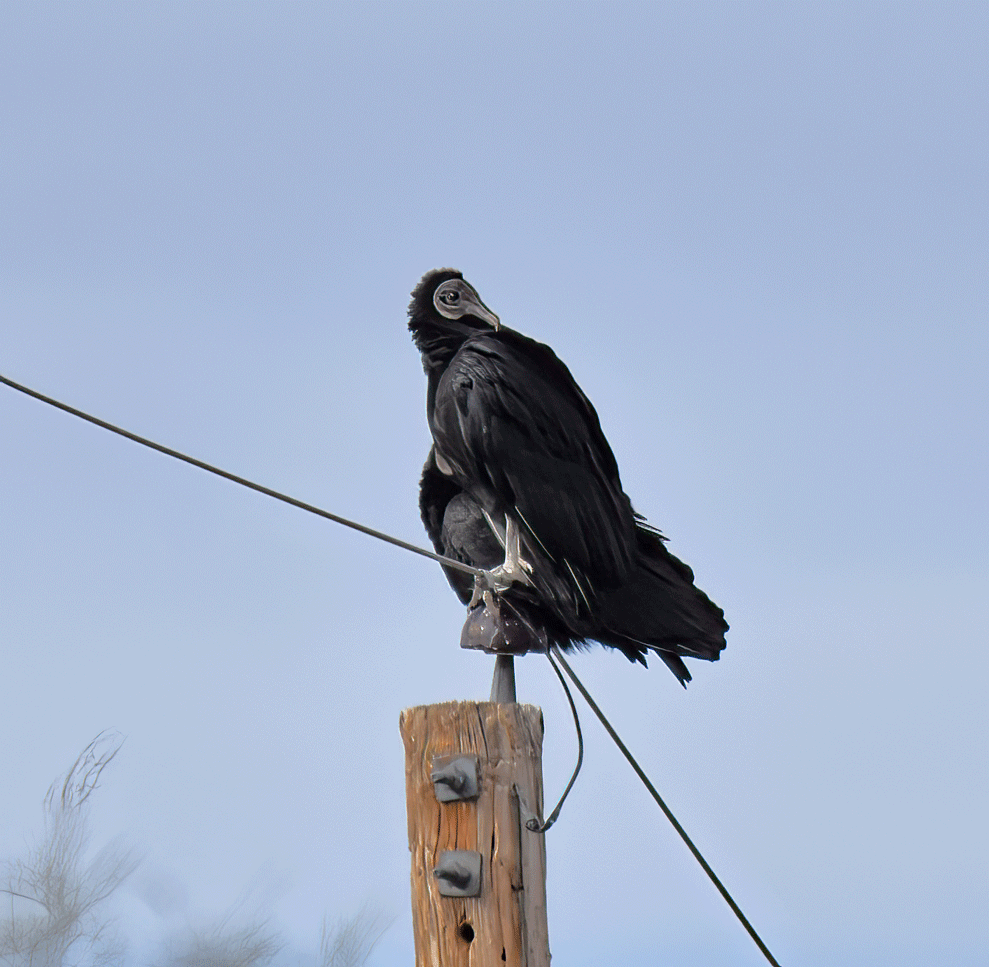
We ended the year with a great sighting of a Blue-headed Vireo, from the bike path along the Santa Cruz River about twenty minutes from our place. One of our birding friends told us that this is only the second time that this species has been seen in Tucson.
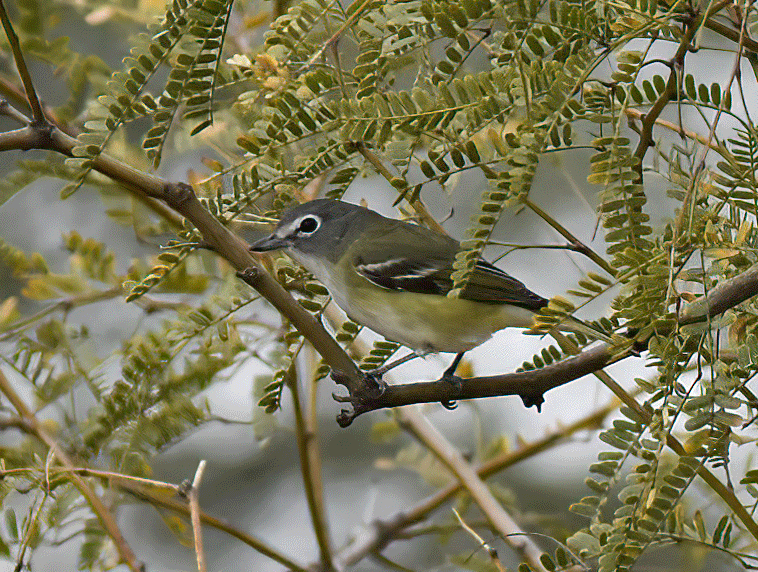
We had a great birding month and we’ve made a great start on the new year. We’re already prepping next month’s blog which will be ready in early February.


